
Jean-Baptiste Geneviève Marcellin Bory de Saint-Vincent was a French naturalist, officer and politician. He was born on 6 July 1778 in Agen (Lot-et-Garonne) and died on 22 December 1846 in Paris. Biologist and geographer, he was particularly interested in volcanology, systematics and botany. The standard author abbreviation Bory is used to indicate this person as the author when citing a botanical name.
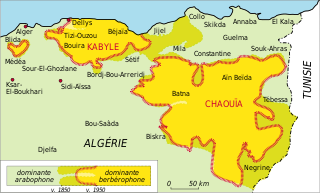
The Chaoui people or Shawia are a Berber ethnic group native to the Aurès region in northeastern Algeria which spans Batna and Khenchla, Oum El Bouaghi provinces located in and surrounded by the Aurès Mountains.
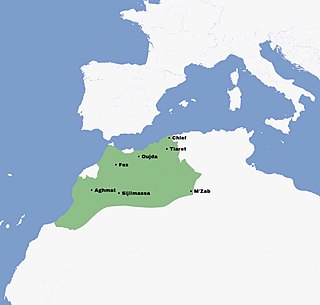
The Maghrawa or Meghrawa were a large Zenata Berber tribal confederation whose cradle and seat of power was the territory located on the Chlef in the north-western part of today's Algeria, bounded by the Ouarsenis to the south, the Mediterranean Sea to the north and Tlemcen to the west. They ruled these areas on behalf of the Umayyad Caliphate of Cordoba at the end of the 10th century and during the first half of the 11th century.
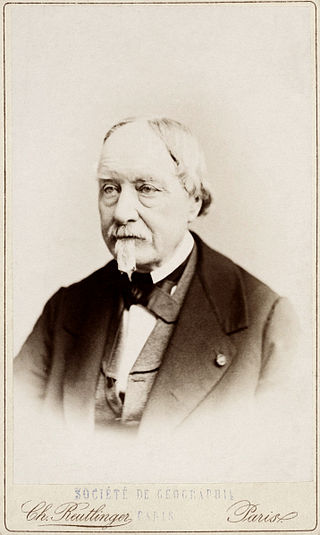
William McGuckin, known as Baron de Slane was an Irish orientalist. He became a French national on 31 December 1838. and held the post of the Principal Interpreter of Arabic of the French Army from 1 September 1846 until his retirement on 28 March 1872. He is known for publishing and translating a number of important medieval Arabic texts.

Mila is a city in the northeast of Algeria and the capital of Mila Province. In antiquity, it was known as Milevum or Miraeon, Μιραίον and was situated in the Roman province of Numidia.

Jean Paul Louis François Édouard Leuge-Dulaurier was a French Orientalist, Armenian studies scholar and Egyptologist.

Jules René Bourguignat was a French malacologist, a scientist who studied mollusks. He served as secretary-general of the Société malacologique de France. He traveled widely, visiting, for example, Lake Tanganyika and North Africa. He reportedly defined 112 new genera and around 2540 new species of mollusks.
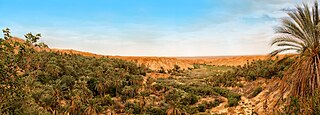
Negrine is a town and commune in Tébessa Province in north-eastern Algeria. It was the site of ancient Casae Nigrae, a settlement of Roman North Africa with an attached bishopric that remains a Latin Catholic titular see.
Paul Maurice Pallary was a French-Algerian malacologist.
The Hawwara, also spelled Huwwara, Howwara, Hewwara or Houara, is an Arab-Berber tribal confederation in the Maghreb, primarily in Tripolitania, with descendants in Upper Egypt and Sudan. Hawwara are amongst the most prominent tribes in Upper Egypt, with branches found mainly in Qena. In Sudan, they are labelled as Hawwaweer, and have a significant political presence.
Edmond Doutté was a French sociologist, orientalist and Islamologist - both Arabist and Berberologist - but also an explorer of Maghreb.
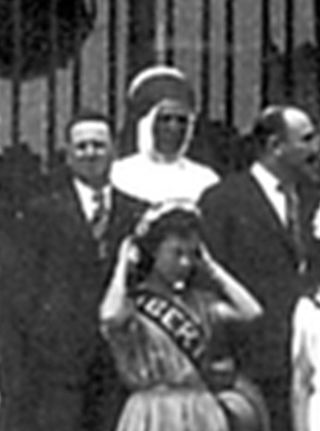
Mohamed Deriche, was an Algerian Berber politician after the French conquest of Algeria.

Auguste Hubert Warnier was a French medical doctor, journalist and politician who spent most of his career in Algeria. At first he was a Saint-Simonian and was sympathetic to the local population. He thought the Berbers had Germanic blood and a civilization derived from Roman and Christian origins, so could readily adapt to French civilization. He had no respect for the Arab "intruders". Later he took the view that the indigenous people had destroyed the once-fertile environment of Algeria, became a proponent of French colonization and opposed the "Arab Kingdom" policy of Napoleon III. In his last years he was a Representative in the National Assembly for the Province of Algiers. He was responsible for a law that allowed expropriation of land or forced sale to colonists.
Jean Ernest Mercier was a translator, historian and French politician
The Beni Ouragh or Aït Ouragh are a Zenata Berber tribe of the Ouarsenis in Algeria, located precisely in the region of Ammi Moussa which rose on their territory to the place once called Khamis. The tribe consists of 23 âarch.
The Campaign of Tlemcen or Tlemcen campaign was a military operation led by the Saadians of Mohammed ash-Sheikh against Tlemcen in 1557, then under the domination of the Regency of Algiers, a vassal state of the Ottoman Empire. Mohammed ash-Sheikh, who wanted to conquer Algeria, occupied the city but failed to seize the Mechouar Palace which was defended by a garrison of 500 men under the command of Caid Saffa.
The Massacre of El Ouffia took place on 6 April 1832 during the French conquest of Algeria. It was a war crime committed against the tribe of El Ouffia near El Harrach by the Troupes Coloniales under Colonel Maximilien Joseph Schauenburg.
Félix-Ariel Flamen d'Assigny was a French officer who participated to the French conquest of Algeria.
The Beni Immel is a tribe/clan in Kabylia, Algeria, located south-west of Béjaïa mainly in Timezrit.

Baron Alban Emmanuel Guillaume-Rey was a French archaeologist, topographer and orientalist. He is known for his historical works on Crusader states and on military fortifications in the Near East. He is considered by some as the first archeologists of the Crusades.











